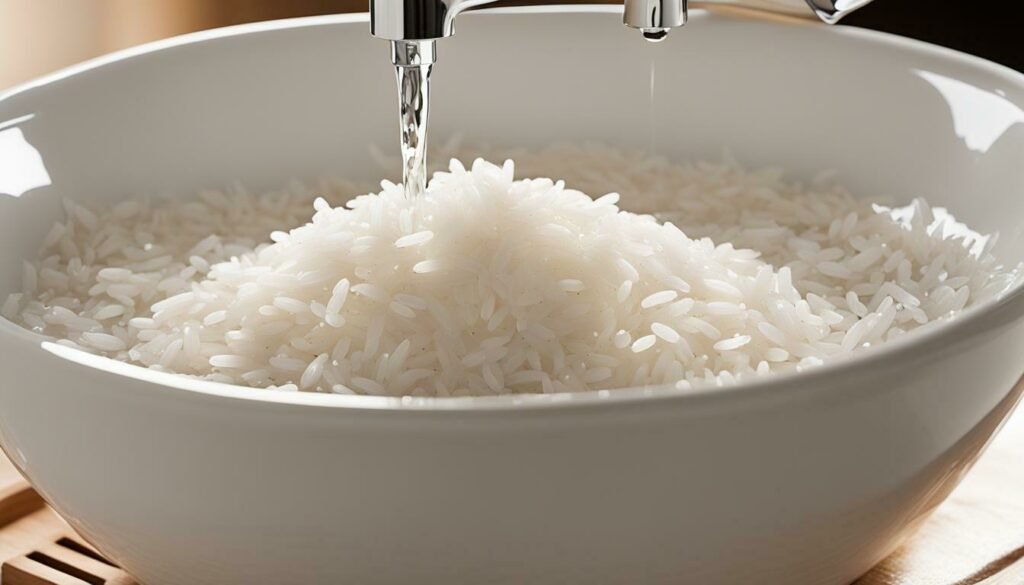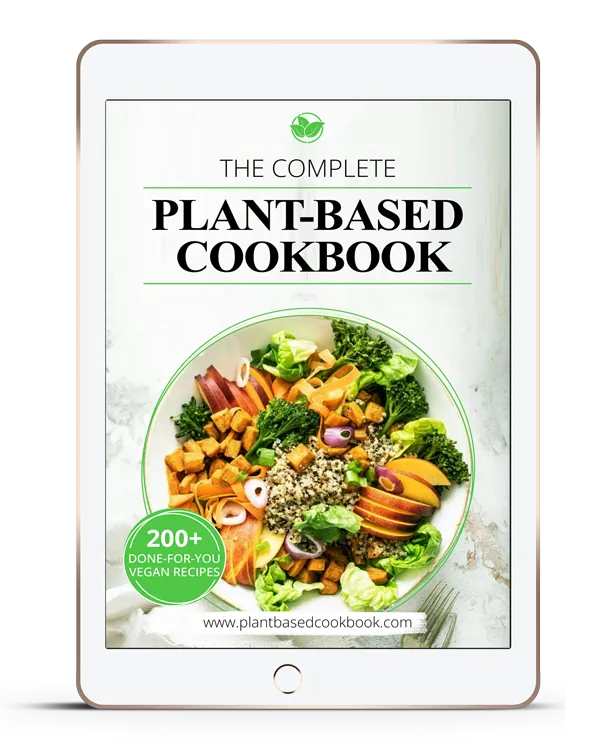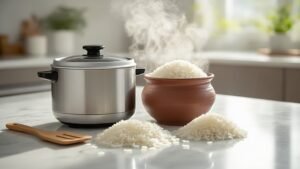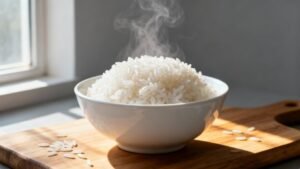Calrose rice is a medium-grain rice variety that originated in California and has become popular worldwide for its versatility and affordability.
It is commonly used in sushi rolls, as well as in many other dishes such as stir-fries, salads, and bowls. While cooking Calrose rice on the stovetop can be time-consuming and require constant monitoring, using a rice cooker can make the process much simpler and hassle-free.
In this article, we will provide step-by-step instructions on how to make perfect Calrose rice in a rice cooker. We will also share tips and tricks to ensure that your rice comes out fluffy, tender, and flavorful every time. Whether you are new to cooking or an experienced home chef looking for an easier way to prepare delicious rice dishes, this guide will show you exactly how to make Calrose rice in a rice cooker and get the best possible results.
Table of Contents
ToggleWhat You Will Need
Like any good dish, the initial step in preparing calrose rice using a rice cooker is to acquire all the necessary ingredients and tools in an organized manner, ensuring that the process runs smoothly.

First, choosing the right rice cooker is crucial. Calrose rice requires a specific type of cooker that can handle its unique requirements. A good quality rice cooker should be able to evenly distribute heat around the pot, allowing for consistent cooking.
Next, measuring accurately is essential when it comes to preparing Calrose rice. Unlike other types of rice, calrose has a delicate balance between water and grain ratio. Too much or too little water can ruin the texture and taste of your dish. To ensure accurate measurement, use a measuring cup specifically designed for rice cookers.

In addition to acquiring the right equipment and measuring accurately, it’s also essential to have high-quality ingredients on hand. This means selecting fresh Calrose rice from trusted brands with a reputation for quality products. It’s important to read labels carefully and check for any signs of damage or spoilage before proceeding with preparation.
By taking these steps into consideration when gathering your ingredients and tools, you’ll be well on your way to creating delicious calrose rice every time you use your rice cooker!
Rinse and Soak the Rice
Rinsing and soaking the rice are crucial steps in preparing calrose rice to achieve optimal texture and flavor. It is recommended to rinse the rice thoroughly until the water runs clear, removing excess starch that can cause clumping or stickiness.

Soaking the rice for at least 30 minutes before cooking allows it to absorb moisture evenly, resulting in fluffier and more tender grains.
To further emphasize the importance of rinsing rice before cooking, let us take a look at a comparison table between different types of rice.
As shown below, brown rice requires more thorough washing compared to white or sushi rice due to its higher fiber content. However, regardless of rice type or color, rinsing is necessary before cooking for better texture and taste.
| Rice Type | Water Ratio | Soaking Time |
|---|---|---|
| Brown | 2:1 | 30 minutes |
| White | 1:1 | None |
| Sushi | 1:1 | 15 minutes |
By following this crucial first step thoroughly and efficiently, we can ensure that our calrose rice comes out perfectly cooked every time with maximum flavor and quality.
Soak the Rice for Better Texture
To enhance the texture of calrose rice, soaking it for a certain amount of time before cooking can be beneficial. Soaking helps to soften the outer layers of the grain and allows water to penetrate more evenly during cooking.
There are different methods for soaking rice, but one popular way is to soak it in water at room temperature for 30 minutes before cooking. This method is recommended by many Japanese chefs who specialize in making sushi rice, which is also made with calrose rice.
Another method is to soak the rice overnight in the refrigerator, which can help save time when preparing meals. However, it’s important not to soak the rice for too long as this can cause it to become overly soft and mushy when cooked.
Overall, taking the time to soak calrose rice before cooking can lead to a better texture and overall taste experience.
Add the Rice and Water to the Rice Cooker
Next, measure out the desired amount of calrose rice and add it to the rice cooker along with the appropriate ratio of water according to the manufacturer’s instructions. It is important to follow these instructions as different brands and models may require varying amounts of water for optimal cooking results. Additionally, it is recommended to use filtered or distilled water instead of tap water which may contain impurities that can affect the taste and texture of the rice.
Once the rice and water are added to the rice cooker, close the lid securely and select the appropriate setting based on your personal preference or recipe requirements. Some rice cookers have multiple settings such as white rice, brown rice, sushi rice, or quick cook options. Depending on your chosen setting and quantity of rice, cooking time can range from 20-45 minutes. Avoid opening the lid during cooking as this can release steam and disrupt the cooking process.
After cooking is complete, allow the rice to rest in the closed cooker for an additional 5-10 minutes before opening. This allows any remaining moisture to be absorbed by the grains resulting in a fluffy texture. Fluff up with a fork before serving and enjoy! Rice cooker maintenance should also be performed regularly according to manufacturer guidelines in order to ensure consistent performance over time. Alternative methods for cooking calrose include stovetop boiling or using a pressure cooker which can result in different textures or flavors compared to a standard electric rice cooker method.
Cook the Rice
Cooking the calrose grains in a controlled and consistent manner is crucial to achieve a perfectly fluffy and flavorful rice. Once you have added the appropriate amount of water, close the lid of your rice cooker, plug it in, and turn it on. The cooking time will vary depending on the settings of your specific appliance.
It’s worth noting that there are alternative methods to cook calrose rice if you don’t have access to a rice cooker. One option is the stovetop method, where you bring water to a boil before adding rinsed rice and simmering with a lid for 18-20 minutes. Another method involves using a microwave-safe dish with rice and water, covered tightly with plastic wrap before microwaving for 10-12 minutes.
Calrose isn’t the only type of rice available either; there are numerous varieties each with its unique flavor profiles and textures. For example, jasmine or basmati has an aromatic fragrance ideal for curries or stir-fry dishes while sushi rice is perfect for making sushi rolls due to its sticky texture. Experimenting with different types can open up new culinary experiences that add depth and complexity to your meals.
Fluff and Serve the Rice
After the calrose rice has finished cooking, it is important to fluff and serve it immediately to ensure optimal texture and taste. Fluffing the rice involves loosening up any clumps that may have formed during the cooking process. This can be done using a fork or a specialized tool called a rice paddle. It is important to use gentle movements when fluffing the rice to avoid breaking or crushing the grains.
When serving calrose rice, there are several suggestions that can enhance its flavor and presentation. One option is to sprinkle some toasted sesame seeds on top of the rice for added crunch and nuttiness. Another suggestion is to add some chopped scallions or cilantro for freshness and color. Some people also like to drizzle soy sauce or teriyaki sauce on top of their calrose rice for an extra burst of umami flavor.
Fluffing techniques and serving suggestions are two important aspects of making delicious calrose rice in a rice cooker. By gently fluffing the cooked grains with a fork or paddle, you can achieve a light and fluffy texture that enhances the overall eating experience. Adding toppings such as sesame seeds, scallions, cilantro, or sauces can further elevate the dish’s flavor profile and make it more visually appealing.
Tips and Tricks for Perfect Calrose Rice
When it comes to cooking calrose rice, adjusting the water ratio can make a noticeable difference in texture. A higher water ratio will yield softer rice, while a lower one will result in firmer grains. Additionally, adding seasonings or broth can enhance the flavor of the rice, making it a more versatile ingredient for various dishes. Finally, storing leftover rice properly is crucial to prevent spoilage and maintain its quality. Considering these tips and tricks can help achieve perfect calrose rice every time.
Adjust the Water Ratio for Softer or Firmer Rice
To achieve a desired texture of calrose rice, modifying the water ratio is essential and can be done by adjusting the amount of water being used. The ratio of water to rice for calrose rice is 1:1.25. However, this ratio can be adjusted based on personal preference for softer or firmer rice.
Here are some tips for adjusting the water ratio to achieve your preferred texture:
- For firmer rice, decrease the amount of water by 1-2 tablespoons per cup of rice
- For softer rice, increase the amount of water by 1-2 tablespoons per cup of rice
It’s important to note that other factors such as water temperature and type of rice can also affect the final texture. Using cold or room temperature water will result in firmer rice while using hot or boiling water will result in softer and stickier rice. Additionally, different types of calrose rice may require different amounts of water to reach optimal texture. Experimentation with these factors may be necessary to find the perfect balance between firmness and softness in your calrose rice cooked in a rice cooker.
Add Flavor with Seasonings or Broth

To achieve the perfect texture and consistency of calrose rice, it is essential to adjust the water ratio during cooking. However, adding flavor to your calrose rice can elevate its taste and create a more enjoyable dining experience. This brings us to our current subtopic: ‘Add Flavor with Seasonings or Broth’.
Seasonings are an excellent way to add flavor and aroma to your calrose rice effortlessly. Common seasoning blends include garlic powder, onion powder, turmeric, black pepper, paprika, and cumin. These seasonings not only enhance the taste of your rice but also offer health benefits such as anti-inflammatory properties and aiding digestion. On the other hand, using broth instead of water in cooking adds depth and complexity to the dish’s flavor profile. It infuses the rice with added richness while maintaining its texture.
The following table highlights some popular seasonings blends and broth alternatives that you can use when preparing calrose rice:
| Seasoning Blends | Broth Alternatives |
|---|---|
| Garlic Powder | Chicken Broth |
| Onion Powder | Vegetable Broth |
| Turmeric | Beef Broth |
| Black Pepper | Mushroom Broth |
| Paprika | Seafood Broth |
| Cumin | Bone Broth |
Adding these flavorsome ingredients will undoubtedly take your calrose rice from bland to delectable in no time. Whether you opt for a simple seasoning blend or experiment with different broths, it all comes down to personal preference. So go ahead and try different combinations until you find one that perfectly suits your taste buds!
Store Leftover Rice Properly
Proper storage of leftover calrose rice is crucial in maintaining its freshness and preventing bacterial growth. Here are some storing techniques that you can use to keep your leftover rice safe for consumption:
- Let the rice cool down before storing it in an airtight container. This will prevent the growth of bacteria.
- Store the rice in small portions so that you can easily reheat only what you need without leaving any leftovers.
- Keep the rice refrigerated at a temperature below 40°F or frozen at 0°F if not consumed within two hours after cooking to slow down bacterial growth.
- Reheat leftover rice thoroughly to kill any bacteria before consuming.
When reheating leftover calrose rice, there are several options available to ensure it stays fresh and tasty:
- Use a microwave-safe container with a lid and add water or broth to moisten the rice while heating up.
- Steam the rice using a steamer basket or colander over boiling water until heated through.
- Heat up the rice on stove-top by adding some oil or butter, stirring occasionally, and covering it with a tight-fitting lid for even heating.
- Make sure that you consume reheated calrose rice within two hours of reheating as bacteria can still grow at room temperature after being cooked twice.
By following these storing techniques and reheating options, you can keep your calrose rice fresh, safe, and delicious every time!
Conclusion
In conclusion, making Calrose rice in a rice cooker is an easy and efficient process that can produce delicious results. By following the steps outlined above, you can achieve perfectly cooked rice every time. Remember to rinse and soak the rice before cooking, use the correct ratio of water to rice, and let the rice sit for a few minutes before fluffing it with a fork.
To add some emotion to this informative article, we can use a rhetorical device called pathos. By describing how the fluffy, fragrant Calrose rice can transport you to memories of warm family dinners or exotic travels abroad, we can evoke feelings of nostalgia and comfort in our audience. This helps to create a connection between the reader and the topic at hand, making them more likely to engage with the information provided. So next time you’re craving some delicious Calrose rice, fire up your trusty rice cooker and get ready for a meal that will transport you to new heights of culinary bliss!
Last update on 2025-10-14 / Affiliate links / Images from Amazon Product Advertising API






